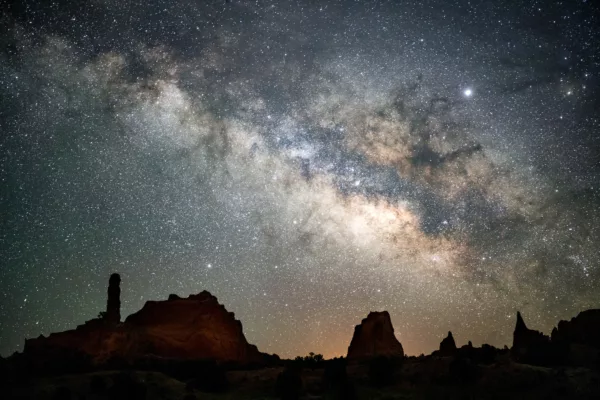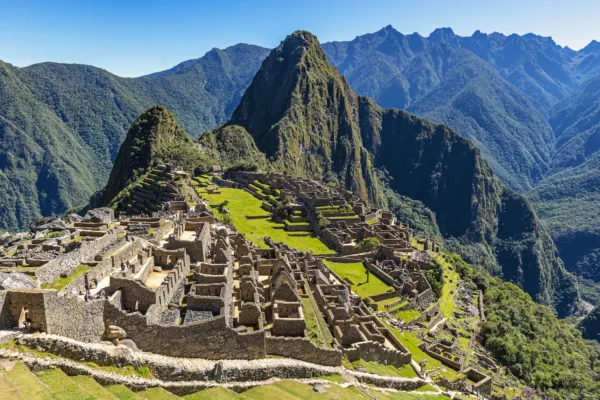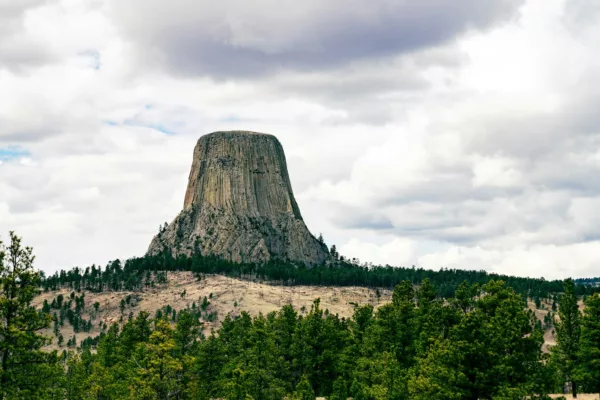Tips for the Perfect Paddling Trip

Over the past seven years, I’ve paddled 327 of Algonquin Park’s lakes, rivers and creeks. I’ve had many great experiences along the way, but I’ve also made mistakes. From seemingly (but not at all) minor oversights like leaving the toilet paper behind, to more serious errors like trying to outrun a thunderstorm, here are three of my biggest mistakes, and what I should have done differently.
Have the Right Gear
 Drew Czernik
Drew Czernik
The Big Trout Loop is one of the more popular routes out of the Highway 60 corridor. The loop starts and ends from Canoe Lake and covers approximately 70 kilometres over three or four days. From jumping cliffs to waterfalls, big lakes to creeks, this route gives you a taste of everything that Algonquin has to offer.
I was on day two of this route, almost to Big Trout, when my paddle decided to take an early retirement. One moment we were cruising towards Grassy Bay, the next I was holding two pieces of a formerly one-piece paddle and staring at another 35 kilometres of paddling before we were back at the access point.
To add insult to injury, I didn’t have a spare paddle.
 Drew Czernik
Drew Czernik
Why didn’t I have a spare paddle? Short answer: stupidity. Longer answer: I had stopped bringing my spare a few years back because a) it was a pain to carry, and b) I hadn’t needed it yet, so of course never would. Also, c) stupidity.
As a bonus, along with my decision to leave my spare paddle at home, my repair kit was nonexistent. I had duct tape, but not much else. Eventually, thanks to the kindness of some passing trippers, we cobbled together a bionic version of my paddle using duct tape, zip ties and a prayer.
The next two days were slow and frustrating, but they didn’t have to be! That spare paddle should never have been left behind. I should have had the tools and supplies I’d need if a piece of vital gear broke mid trip. While duct tape solves a lot of problems, it can’t solve them all. If you don’t have a plan for what to do if your paddle, tent or canoe breaks, then your trip plan needs some work. Duct tape and zip ties only go so far.
Plan for the Conditions
In August 2022, I planned a relatively ambitious eight-day solo trip. The route started with a couple of days on the Nipissing River, which runs west to east through the middle of Algonquin. It’s a picturesque waterway known for placid waters and wildlife sightings (which, depending on the season, can be another way of saying shallow water and bugs). My plan was to follow the river deep into the park, and to do it quickly. Unfortunately, as it turned out, getting anywhere along that stretch of the Nipissing quickly was not in the cards.
 Drew Czernik
Drew Czernik
I gave myself two days to cover the first 40 kilometres of this trip, which is manageable on open water and well-travelled portages—but less manageable when water levels are low and the river is doing its best impression of a corkscrew. I lost hours hopping in and out of my boat, dragging across beaver dams and fighting through alders. By halfway through day two, I was mentally and physically exhausted, and hopelessly behind schedule. I ended up bailing on the trip, turning my eight-day adventure into a three-day disappointment.
This too could have been avoided! I was too aggressive with my distance expectations. My entire trip plan relied on covering long distances over the first couple of days. What I didn’t think about was what would happen if I didn’t make those distances. If I’d given myself an easier start to the route, taking three days instead of two to cover those first 40 kilometres, I would have had more margin for error (and alder!).
 Drew Czernik
Drew Czernik
My other mistake was in not planning for the terrain I was traveling through. That first part of the Nipissing is well known for its narrow, winding passages, low water and encroaching alder, especially later in the season. I knew this and ignored it. I planned my days the same way I’d plan an open water trip. Given what I knew about the terrain ahead of time, I should have left room in my trip plan for obstacles, detours and delays, instead of planning for—and relying on—perfection.
Don’t Race Thunder
July 2020 found me paddling across Kioshkokwi Lake, working through the final few kilometres of a 35-kilometre day. This was fine. Most of those kilometres had been paddling, not portaging, and that made the distance manageable. However, what wasn’t fine was the rumble of thunder behind us and the wall of dark clouds in the distance.
 Drew Czernik
Drew Czernik
To reach the access point, we needed to cross a wide basin. Normally, that crossing takes about 10 minutes. I looked at the blue skies above us, thought about how much I wanted to be done with the day and eating my post-trip burger and decided that the storm was far enough away that we’d be on the other shore before it hit.
We were not on the other shore before it hit.
The storm caught us in the middle of the basin, about a kilometre from any kind of shelter. First, the wind grabbed our boat and swung us sideways. The waves kicked up, washing over the sides of the canoe and threatening to swamp us. Then, the lightning arrived—and it was everywhere.
I’m still not sure how we managed to get through those first few minutes without dumping. Luck, not skill, that’s for sure. We managed to stay upright long enough to make it to a seagull island in the middle of the lake. We huddled on the rock, clinging to our canoe in the pouring rain, lightning crashing all around us.
 Drew Czernik
Drew Czernik
Eventually, the storm moved on. We got back in our boat and paddled out, aware that we’d just gotten very lucky.
I had a lot of trouble sleeping that night. My decision put a friend in danger, and it could have been much worse. The lesson here is simple—don’t fight the weather. If you hear thunder, get off the water. If the wind is too strong and the waves are too high, stay on shore and wait them out. It’s always better to take those few extra minutes or hours when conditions are deteriorating. That end of trip burger is going to be there no matter how long it takes you to get to it, your job is to make sure you get there in the first place.
What each of these three situations had in common was overconfidence. In each case, I ignored the best trip practice in favour of the more convenient one. I assumed that everything would work out in the end. That’s not a good plan for any kind of wilderness adventure. The next time you’re heading out, remember to pack that spare paddle, pay attention to your route and whatever you do, don’t race thunder.
Read more water adventures:
How Folding Kayaks Can Change Lives
The Way of the Wolf: Kayaking Through the Place of Spirits
The Happy Camper: Show Me Your Paddle














